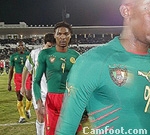 In eleven days time, Africa’s football giants go on stage in Tunisia. It will be another thrilling soccer fiesta as the 16 finalists will be vying for the most coveted trophy in the continent, the African Cup of Nations. The event will kick off with a grandiose opening ceremony and match on January 24th in Tunis and end with the final on February 14th in Rades.
In eleven days time, Africa’s football giants go on stage in Tunisia. It will be another thrilling soccer fiesta as the 16 finalists will be vying for the most coveted trophy in the continent, the African Cup of Nations. The event will kick off with a grandiose opening ceremony and match on January 24th in Tunis and end with the final on February 14th in Rades.
Hosts Tunisia will face newcomers Rwanda in the opening game while cup holders, Cameroon, start the defence of their title against Algeria in Sousse on 25 January. As has been the case in the past, Africa will be presenting it’s football prowess to the world as virtually all its professional footballers in the diaspora will be in Tunisia to defend their national colours.
Zine El Abidine Ben Ali’s nation will be hosting the event for the second time in about a decade. The Northern Africa country bordering the Mediterranean Sea is set to receive the thousands of football fans who will flood into the country to cheer their teams to victory. The 32 encounters will be played in six venues: Ben Arous, Bizerte, Sousse, Monastir, Sfax and Tunis. Last month, CAF officials visited the various sites and were satisfied with the facilities. Cameroon will play it’s group matches in Sousse, sfax and Monsatir.
The road to Tunisia was long and winding for many countries. Besides defending champions Cameroon and host Tunisia, the other countries had to fight for one of the 14 remaining chances during the qualifying series. The qualifiers ran from November 6th 2002 and ended on July 6th 2003. The participating countries were divided into seven groups of four and six groups of three with the 13 group winners and one second best from the groups of four team qualifying for the finals in Tunisia. It is during this process that RD Congo, Guinea, Senegal, Burkina Faso, Kenya, Mali, Algeria, Egypt, Nigeria, Morocco and South Africa as well as newcomers such as Benin, Rwanda and Zimbabwe, picked their qualification.
The African Cup of Nations, which is organised every two years in the form of a final tournament, has come a long way to become the number one competition in CAF calendar and the continent as whole. The inaugural edition was organized in 1957 in Sudan, with only three teams. Host Sudan, Ethiopia and winner Egypt participated. From 1968 to 1990, CAF increased the number of finalists to eight and a further increase to 12 teams in 1992. In line with CAF’s development policy of the game in the continent and the participation of more countries, the number of finalists was increased to 16 teams. The teams have been divided into four groups. The first two of each group will move to the next phase of the competition.
Beginning today, Cameroon Tribune is launching a series to spot light the participating countries and other activities related to the tournament. Key players of the different squads will also be presented.
Irene MORIKANG










